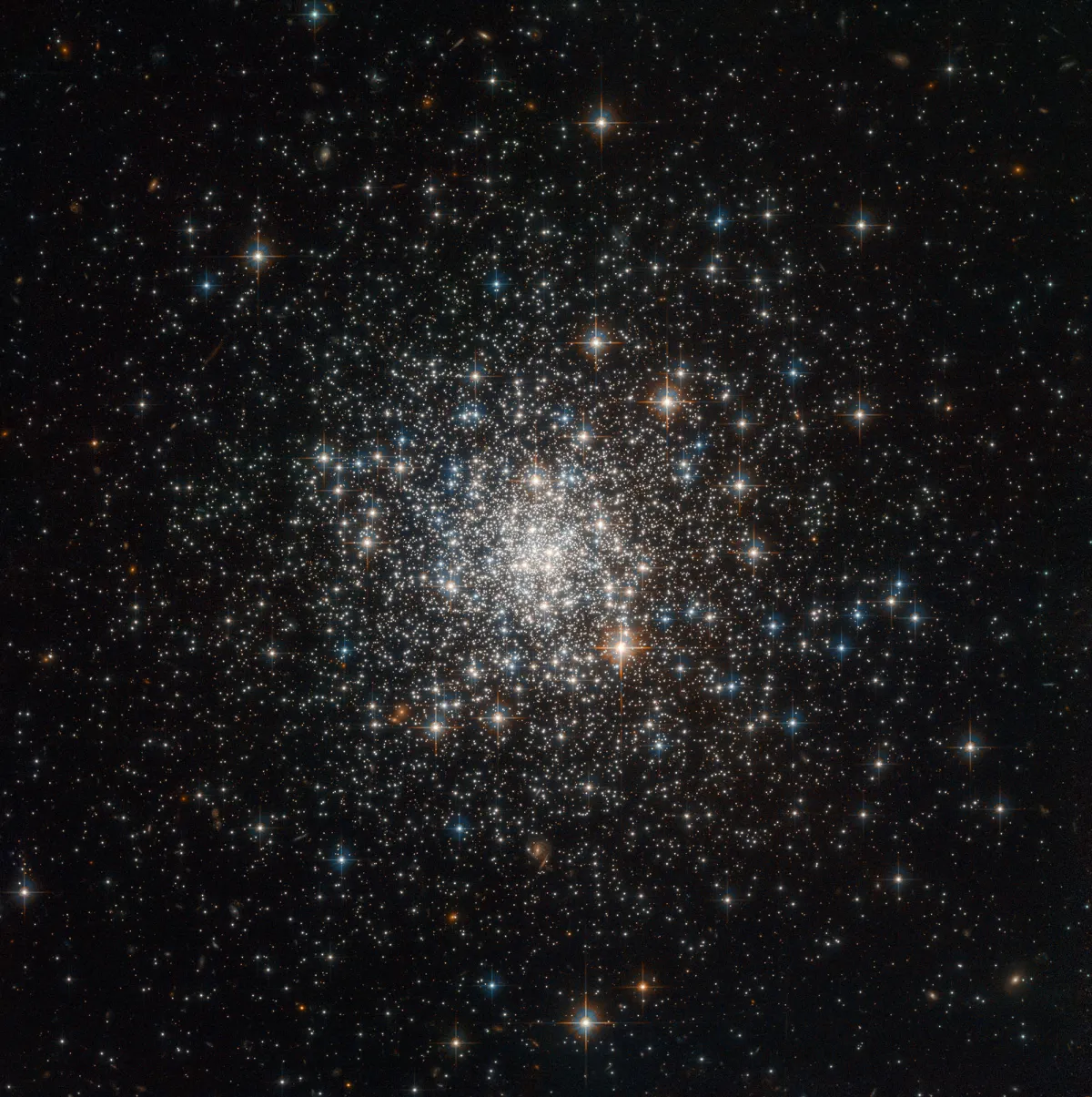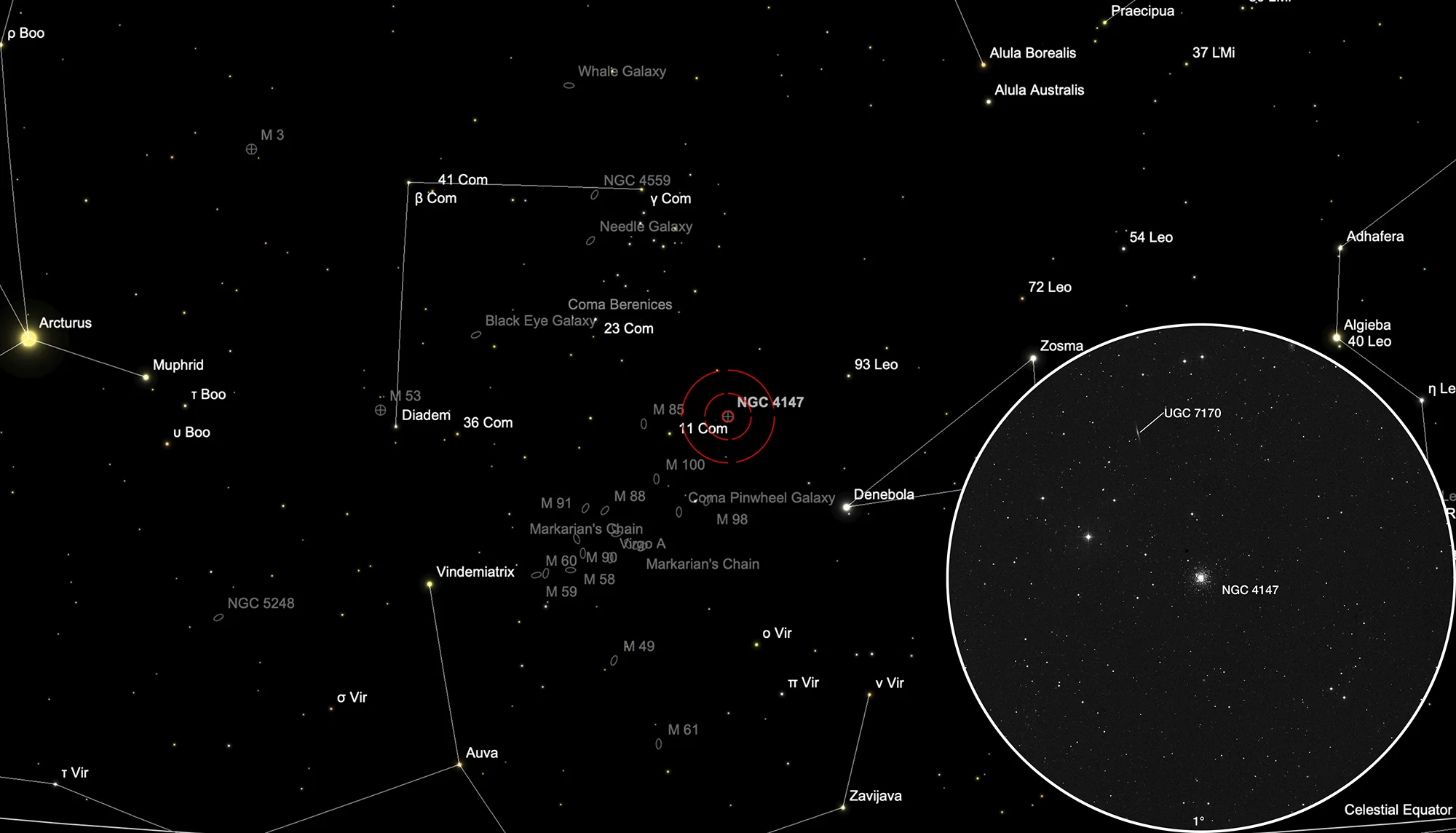Globular Cluster NGC 4147

History
On 15 February 1784 the German-British astronomer William Herschel found with his 18.7 inch reflecting telescope a «bright nebula» which he cataloged as I 11 and noted: «bright, pretty large, little elongated, brighter in the middle, much.» The position he gave was related to the star 5 Comae Berenices: preceding 1m 30s, south 2° 11'. Almost one month later, on 14 March 1784 he came along the same patch in the sky and unknowingly cataloged the same nebula, this time with the position measured relative to the star 11 Comae Berenices: preceding 10m 30s, north 0° 46'. He cataloged it again as I 19 with the description: «very bright, pretty large, gradually brighter in the middle.» [463]
Herschels son John listed the object I 19 in his Slough catalogue of 1833 as h 1106 and noted: «Bright, round, 80"; donsists of distinct stars. A globular cluster.» [466] In his «General Catalogue» of 1864 he listed GC 2758 (I 11) and GC 2752 (I 19) with different coordinates. The ones of GC 2758 (I 11) were circa a 1/4 degree off to southeast. [467] Dreyer copied the entries of John Herschel to his «New General Catalogue» with GC 2752 = NGC 4147 and the double entry with wrong coordinates being GC 2758 = NGC 4153. [313]
Physical Properties
This relatively small globular cluster is in a distance of 19.3 kpc from Earth and 21.4 kpc from the galactic centre. It is a candidate for association with the Sagittarius tidal stream. It may have been captured by the Milky Way after it has been separated from the Sagittarius Dwarf Spheroidal Galaxy. [588]
| Name | RA | Dec | Type | vMag | Dim | MD | Dreyer Description | Identification, Remarks |
|---|---|---|---|---|---|---|---|---|
| NGC 4147 | 12 10 06.2 | +18 32 33 | dup | 10.4 | 4.4 | 19.000 | globular, vB, pL, R, gbM, rrr | WH I 19; h 1106; GC 2752; NGC 4153; GCL 18 |
| NGC 4153 | 12 10 06.2 | +18 32 33 | GCL (VI) | 10.4 | 4.4 | 19.000 | B, pL, E, bM | WH I 11; GC 2758; NGC 4147; GCL 18 |
Finder Chart
The globular cluster NGC 4147 is located in the constellation Coma Berenices. The best ovserving time is from November to August.
